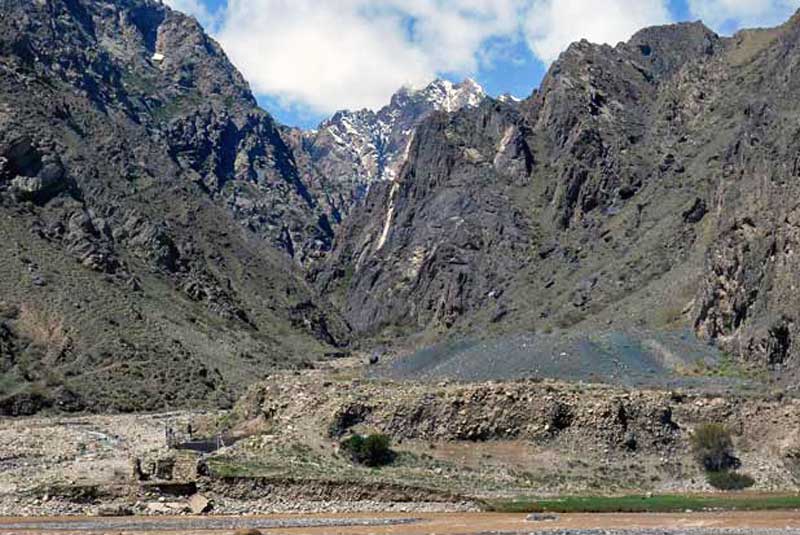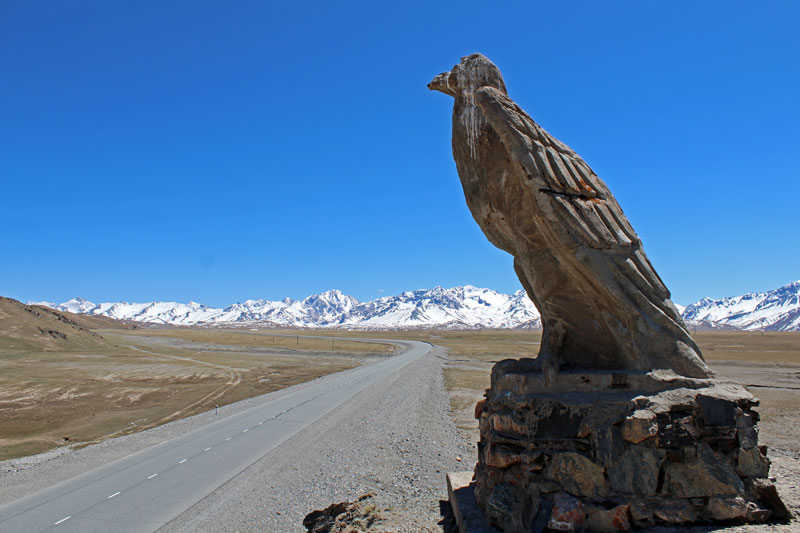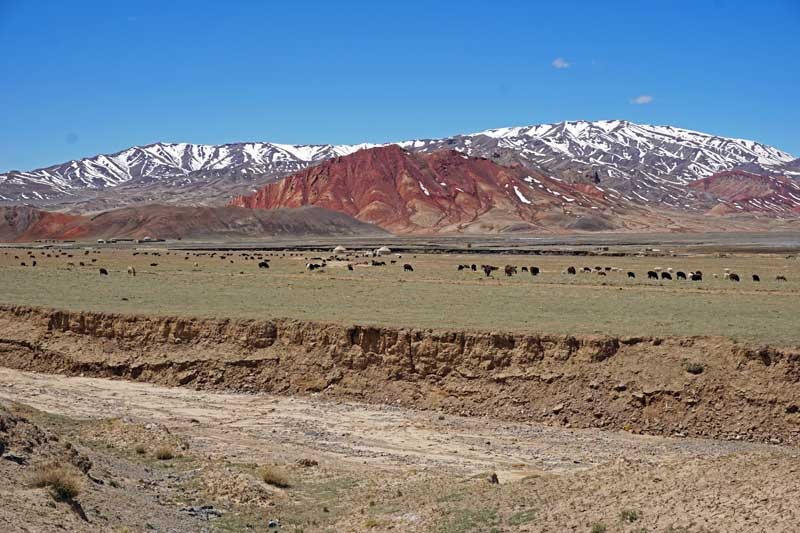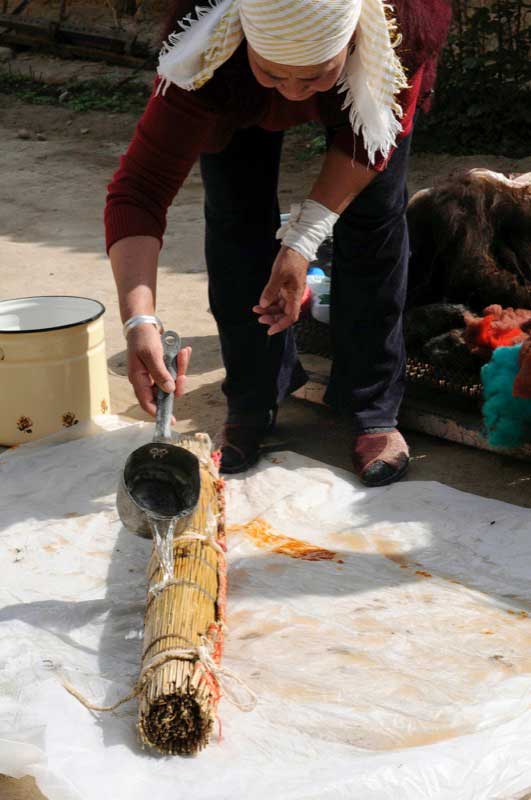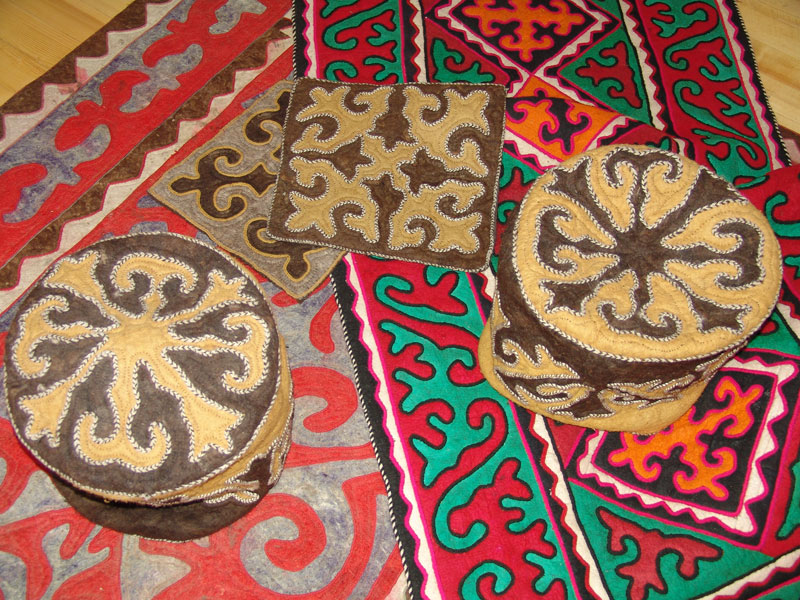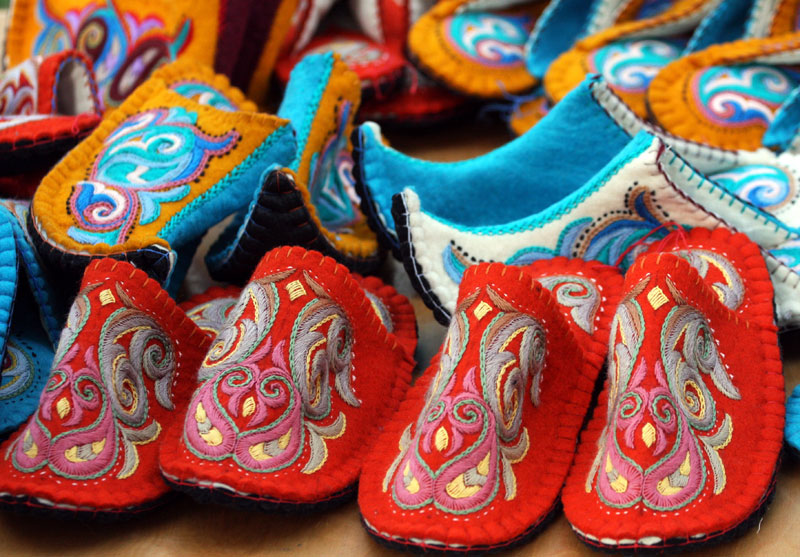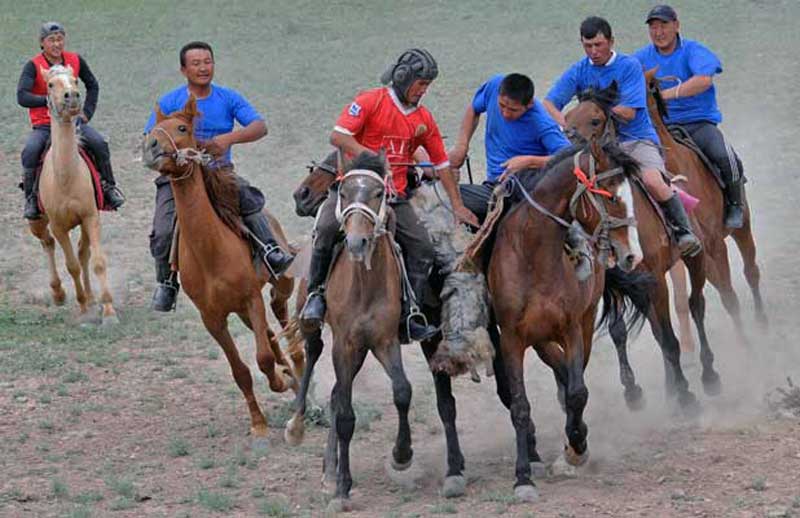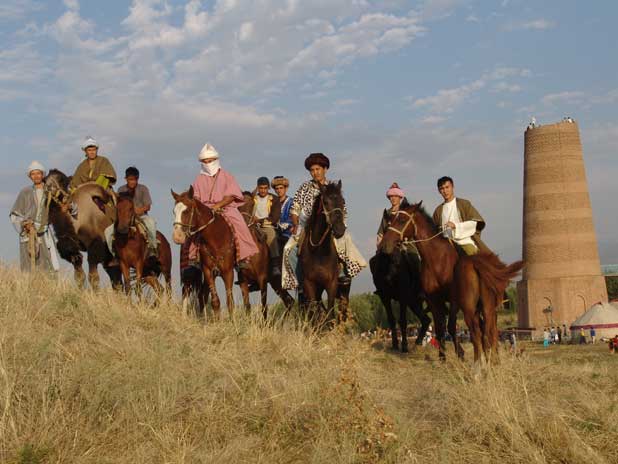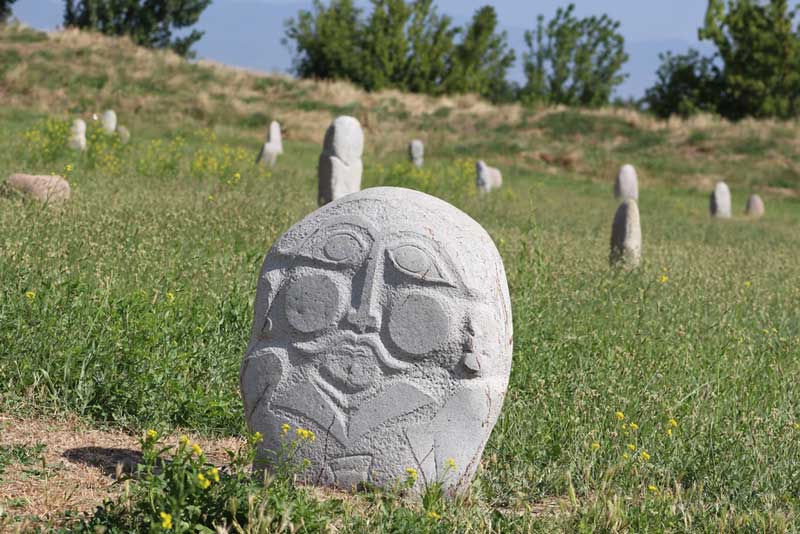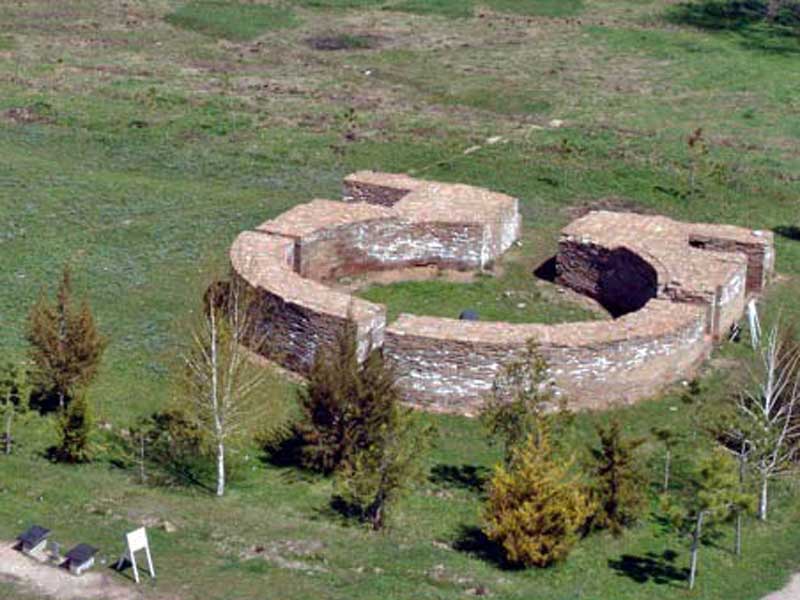MIR President and co-founder Douglas Grimes loves his travels along Central Asia’s Silk Road, seeking memorable places and life-changing experiences for MIR travelers.
Kyrgyzstan is a Silk Road country with plenty of both.
I can’t even count the extensive scouting trips I’ve taken through Central Asia, but those to the countryside of Kyrgyzstan, the Silk Road’s best kept secret, always stay with me. My travels here, as well as our generous hosts, always reinvigorate my appreciation of this part of the world.
It’s a remote, unfamiliar frontier, wide open to travelers who are eager to experience wild beauty, meet nomadic people, and discover the traditions of their forebears. Here are my picks for a few of the many reasons Kyrgyzstan is so special:
Douglas Grimes at the Torugart Pass border crossing between Western China and Kyrgyzstan
1) The Views from Torugart Pass
One of the most intriguing ways to enter Kyrgyzstan is by traveling from Kashgar in Western China over the 12,000-foot-plus Torugart Pass at the China-Kyrgyz border, stopping at imposing Tash Rabat. At such stunning heights, it’s one of the most atmospheric places in Kyrgyzstan.
From the road you can appreciate spectacular views of rugged mountain peaks towering above deep valleys, and far-away glaciers feeding blue lakes, breathing life into the region.
The stone Tash Rabat caravanserai welcomed weary sojourners in Silk Road days
Photo credit: Douglas Grimes
2) Tash Rabat, an Ancient Silk Road Rest Stop
Tash Rabat is a massive stone fortress and ancient caravanserai used by 15th century Silk Road merchants and caravans as a rest stop. It’s the largest stone structure in Central Asia, and its architecture is similar to that of Samarkand. The fortress contains numerous underground passages, secret exits, and underground prisons.
(click on photo for larger version and caption)
It’s exhilarating to descend the pass into Kyrgyzstan and find the serene alpine pastures around Tash Rabat, grazed by herds of yaks and sheep, tended by mounted herders. The only sounds are the burbling of a mountain stream, and the low calls of the animals. At night, the Milky Way spread across the dark sky looks close enough to touch.
It takes patience and precision to lay out the felt pattern
Photo credit: Willis Hughes
3) Handmade Felt in Kochkor
One of my favorite pastimes while exploring the Kyrgyzstan countryside is visiting the sprawling village of Kochkor, located in the flat plain of a cup-shaped valley, and spending time with resident craftswomen.
I never tire of observing their UNESCO-listed traditional craft of felt making, a craft that has survived the centuries. Kyrgyz have always used felted wool to cover their yurts, as well as to make rugs, bags, slippers, and hats.
Sunrise greets fishermen on high-altitude Lake Issyk-Kul
Photo credit: Vlad Ushakov
4) Alluring Lake Issyk-Kul
A drive around the entirety of beautiful Lake Issyk-Kul is not to be missed. “Issyk-Kul” means “warm lake,” because it never freezes despite its high elevation. It’s considered to be the world’s second-largest alpine lake, after Lake Titicaca in South America.
Impressive numbers: Lake Issyk-Kul is 180 km long and 60 km wide in places, located at 1,606 meters elevation
Photo credit: Martin Klimenta
(click on photo for larger version and caption)
Archaeological discoveries from the lake’s bottom include ancient relics and graves dating back to the first millennium BC. The lake shore is dotted with little resort towns and some modern hotels.
Built in 1895, Karakol’s Russian Orthodox Holy Trinity Cathedral is made from wood and corrugated iron
Photo credit: Martin Klimenta
Located at the eastern tip of Lake Issyk-Kul, the town of Karakol was founded late in the 19th century as a Russian military outpost and grew as a refuge for Chinese Muslims (called Dungans) fleeing persecution in the late 19th and early 20th centuries. Many buildings here are constructed in a Chinese style from wood and without metal nails, yet other architectural styles can be found, including a lovely Russian Orthodox Church. While in Karakol, I like to visit a local Dungan Chinese Muslim family home for a meal and to hear about Dungan traditions and history. Their culture is a mix of Chinese, Muslim, Kyrgyz, and Russian customs and practices.
Competitors tussle in a lively Kyrgyz horse game similar to polo
Photo credit: Christine Z. Anderson
Northeast of Lake Issyk-Kul is the beautiful steep-sided Chon (Big) Kemin Valley, running parallel to the border of Kazakhstan between two mountain ranges. The valley’s population is mostly Kyrgyz. Time-honored traditions are still practiced here, including Kyrgyz horse games such as Ulak Tartysh, a sort of polo played with a goat carcass, and kurosh, wrestling on horseback.
The Burana Tower minaret was once 44 meters tall; damage from earthquakes has reduced it to 25 meters
Photo credit: Jered Gorman
5) CLIMB Burana Tower
I always make time to climb Burana Tower (one of the only remaining Silk Road watch towers in Kyrgyzstan) on the way to the capital, Bishkek. The settlement around the tower, Balasagun, was an important seat of power; it was so celebrated that Genghis Khan’s Mongol horde spared it from destruction when they began conquering the region in the early 13th century.
From the top, you look out on miles upon miles of grassland, as well as the small museum below with its graveyard of ancient carved bal-bals, stout stone figures used as monuments.
A warm welcome awaits those who venture to Kyrgyzstan
Photo credit: Michel Behar
6) KYRGYZ HOSPITALITY
Long-standing nomadic traditions have been woven into the way of life of the people who make their homes in this mountainous terrain. Known for their hospitality, the Kyrgyz people welcome visitors with open arms, inviting them to experience their traditions and explore their homeland.
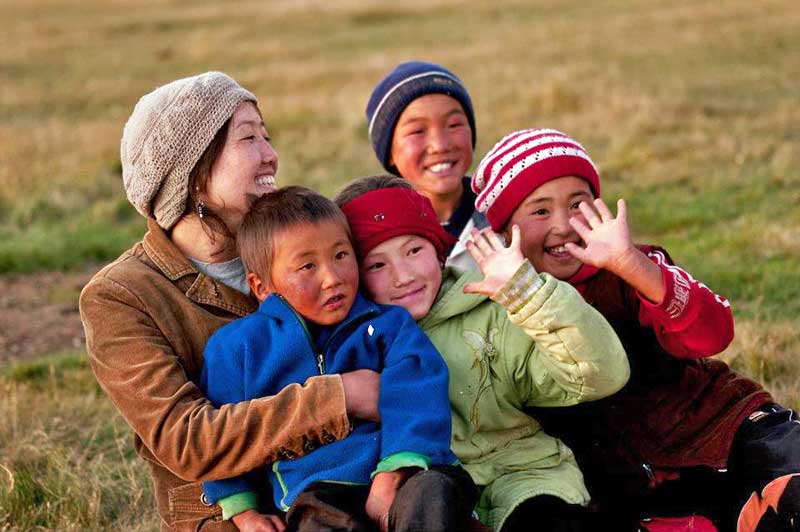
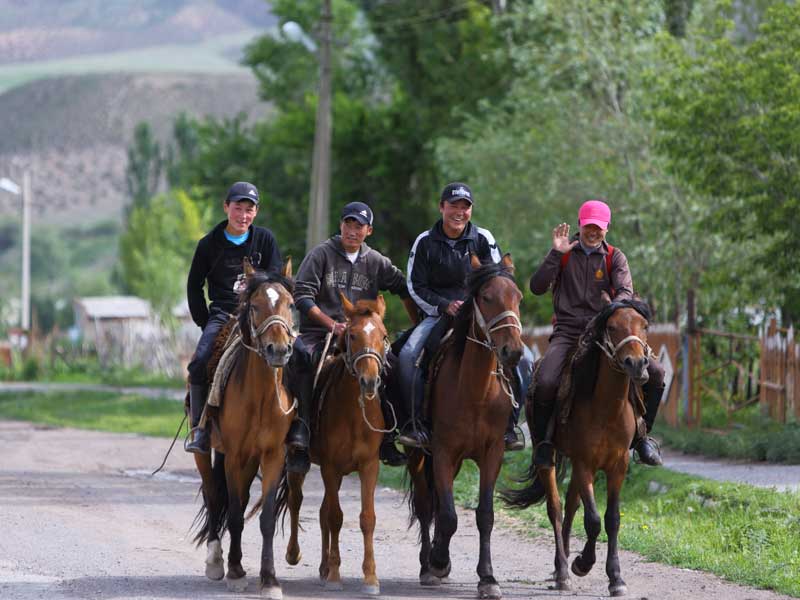
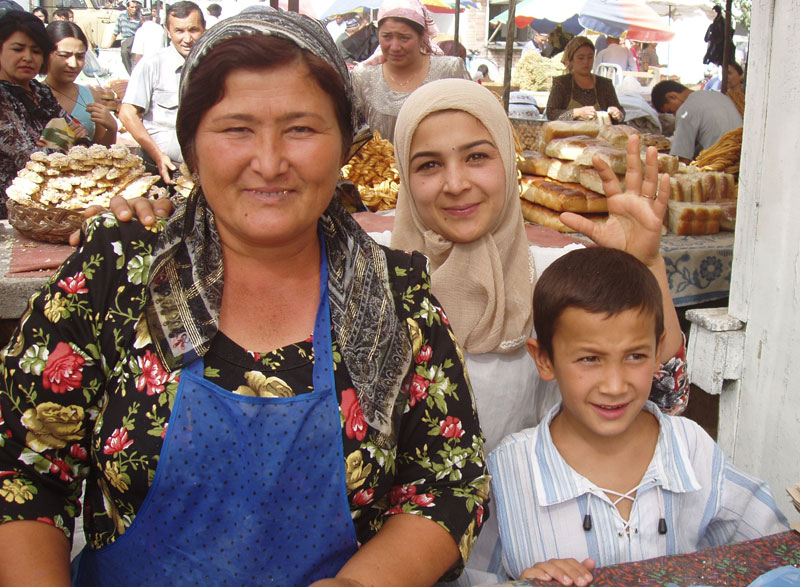
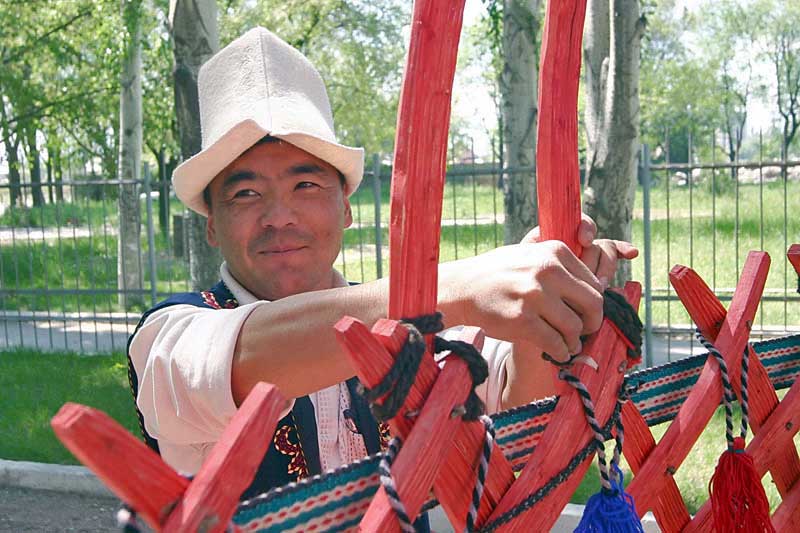
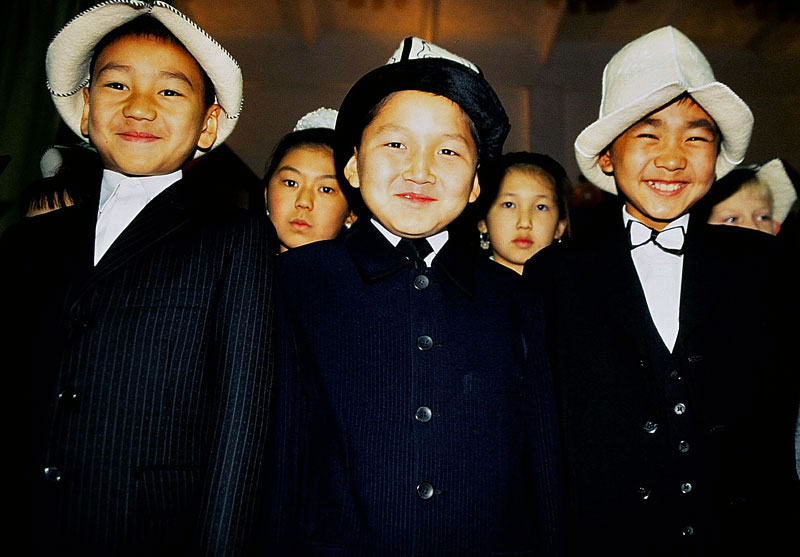
There’s a hopeful, positive mood in Kyrgyzstan these days, with tourism opening up and more visitors arriving. You can see that optimism in action with a visible infrastructural investment in highways, new hotels and guesthouses springing up, and restaurants busy with patrons.
(click on photo for larger version and caption)
One example is a charming guesthouse in the Chon-Kemin Valley, a family-run establishment built on farmland about 80 miles from Bishkek; there are three separate structures, a meeting room, and traditional Russian banya, or steam bath. Everything in this sweet two-story house is handmade in a rustic bare-wood style cut from their own small sawmill. The couple’s light-filled restaurant features organically grown local food – a delightful place to relax and take in the bucolic setting. First-time visitors are returning and spreading the word about their place.
Traditional yurts dot the Kyrgyz highlands in summertime
Photo credit: Douglas Grimes
Another example of tasteful innovation is found in the hills behind Bishkek. The Supara Restaurant and Ethno-Complex is a modern interpretation of a traditional yurt encampment built around seven felt and wood dwellings, where fresh local cuisine is served in your choice of brilliantly decorated yurts. (Supara means a traditional Kyrgyz leather tablecloth.)
A winter visit to Supara Chunkurchak
Photo: Douglas Grimes
Up in the mountains about an hour away, the Supara Chunkurchak is a new specialty yurt lodge, with sweeping views of the surrounding mountains and the valley below. Set at 8,000 feet, the lodge features comfortable modernized en suite yurts, and serves both regional and European cuisine.
Taking a water break in the stunning Jyrgalan Valley
Photo credit: Vlad Ushakov
7) Outdoor Adventure, and Boorsok
As Kyrgyzstan gains a reputation among adventure lovers, mountaineers, skiers, rafters, and trekkers, a new backwoods hotspot has opened up for travelers to enjoy. Near Lake Issyk-kul, the gorgeous Jyrgalan Valley is tucked into the Tersky Ala-Too Mountains at 7,500 feet. The pastoral valley is surrounded by sharply inclined peaks and watered by shallow rushing streams.
From valleys to mountains, hiking is a popular activity, including this trail to Broken Heart near Karakol
Photo credit: Kyrgyz Concepts
Sometimes donkeys are still used to travel the high roads of Kyrgyzstan
Photo credit: Douglas Grimes
You can spend an afternoon or a week, trekking with horses to carry your gear. You can take a short hike among the alpine flowers or simply drive here to visit with a Kyrgyz family and share lunch in their home.
The light-brown, pillow-shaped bread bites on the left are boorsok, a ubiquitous Kyrgyz bread
Photo credit: Jessica Clark
The family can show you how to make boorsok, a fragrant sweet bread fried in oil like a doughnut, and served with honey or jam. It’s a delightful, “down-home” experience – like so many in Kyrgyzstan – that will surely become more familiar as travelers venture to this Central Asian frontier.
(Top feature photo: Sunset at Lake Issyk-Kul. Photo credit: Vlad Ushakov)




